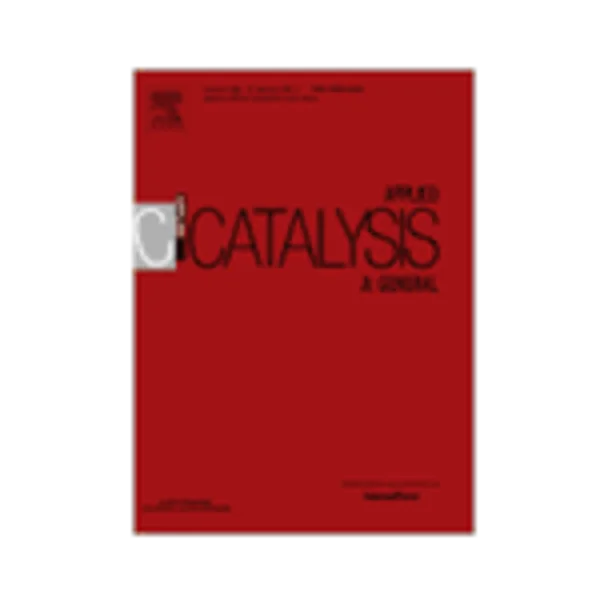-
effects of rehydration of alumina on its structural properties, surface acidity, and hdn activity of quinoline
جزئیات بیشتر مقاله- تاریخ ارائه: 1392/07/24
- تاریخ انتشار در تی پی بین: 1392/07/24
- تعداد بازدید: 1006
- تعداد پرسش و پاسخ ها: 0
- شماره تماس دبیرخانه رویداد: -
a series of aluminas were obtained through rehydration–dehydration of the initial alumina under different hydrothermal conditions. to investigate the influences of rehydration temperature on the physicochemical properties of the as-obtained aluminas, several techniques were applied, such as x-ray powder diffraction, nitrogen adsorption, scanning/transmission electron microscopy, fourier transform infrared, thermogravimetric analysis, and 27al mas nmr. the results show that crystal size and morphology of alumina particles changed as the treatment temperature was increased, and alumina crystallites grew mainly along two surface orientations. consequently, the changes in textural properties of the aluminas took place. in addition, the rehydration process increased not only the weak acid sites but also the strong acid sites, which is closely related to the growth of the (1 1 1) and (1 1 0) surfaces of γ-al2o3. the two type acid sites were originated from coordinately unsaturated four-fold aluminum atoms. tpr for a series of ni(mo) catalysts were carried out and the results show that rehydration process increased the surface acidity and basicity of alumina simultaneously, which enhanced the interacting force of ni and mo species with aluminas respectively. this interaction is closely related to the hydrodenitrogenation (hdn) activity of quinoline over the corresponding nimo/γ-al2o3 catalysts.
مقالات جدیدترین رویدادها
-
استفاده از تحلیل اهمیت-عملکرد در ارائه الگوی مدیریت خلاقیت سازمانی و ارائه راهکار جهت بهبود
-
بررسی تاثیر ارزش وجوه نقد مازاد بر ساختار سرمایه شرکت های پذیرفته شده در بورس اوراق بهادار تهران
-
بررسی تأثیر سطح افشای ریسک بر قرارداد بدهی شرکت های پذیرفته شده در بورس اوراق بهادار تهران
-
بررسی تأثیر رتبه بندی اعتباری مبتنی بر مدل امتیاز بازار نوظهور بر نقد شوندگی سهام با تأکید بر خصوصی سازی شرکت ها
-
تأثیر آمیخته بازاریابی پوشاک ایرانی بر تصویر ذهنی مشتری پوشاک ایرانی (هاکوپیان)
-
بررسی نقش فیبرینوژن در ارتباط احتمالی عفونت هلیکوباکترپیلوری با بیماری های ایسکمیک قلبی
-
بررسی تاثیر الیاف پلی پروپیلن بر بتن خود تراکم حاوی دوده سیلیس و خاکستر پوسته شلتوک برنج
-
مقایسه سطح استرس در دانش آموزان موفق و ناموفق ابتدایی منطقه بزینه رود
-
بررسی تاثیر سرمایه گذاری در بازاریابی رابطه مند بر قدرشناسی و رضایتمندی مشتری در فروشگاه های زنجیره ای شهروند شهر تهران
-
آموزش خلاقانه سازه به دانشجویان معماری با تکیه بر سازه های طبیعی
مقالات جدیدترین ژورنال ها
-
مدیریت و بررسی افسردگی دانش آموزان دختر مقطع متوسطه دوم در دروان کرونا در شهرستان دزفول
-
مدیریت و بررسی خرد سیاسی در اندیشه ی فردوسی در ادب ایران
-
واکاوی و مدیریت توصیفی قلمدان(جاکلیدی)ضریح در موزه آستان قدس رضوی
-
بررسی تاثیر خلاقیت، دانش و انگیزه کارکنان بر پیشنهادات نوآورانه کارکنان ( مورد مطالعه: هتل های 3 و 4 ستاره استان کرمان)
-
بررسی تاثیر کیفیت سیستم های اطلاعاتی بر تصمیم گیری موفق در شرکتهای تولیدی استان اصفهان (مورد مطالعه: مدیران شرکتهای تولیدی استان اصفهان)
-
مقایسه تعالی عملکرد سازمان های کوچک و بزرگ با رویکرد efqm
-
ارزیابی آمادگی الکترونیکی شهرداری تهران
-
بررسی و مقایسه تکنیک های مبتنی برمنطق فازی جهت بهینه سازی مصرف انرژی در شبکه های حسگر بی سیم
-
کاربرد تئوری مبتنی بر عامل در طراحی پوسـته های هوشمند
-
تاثیر نماز و نیایش در تقویت ابعاد معنوی انسان




سوال خود را در مورد این مقاله مطرح نمایید :